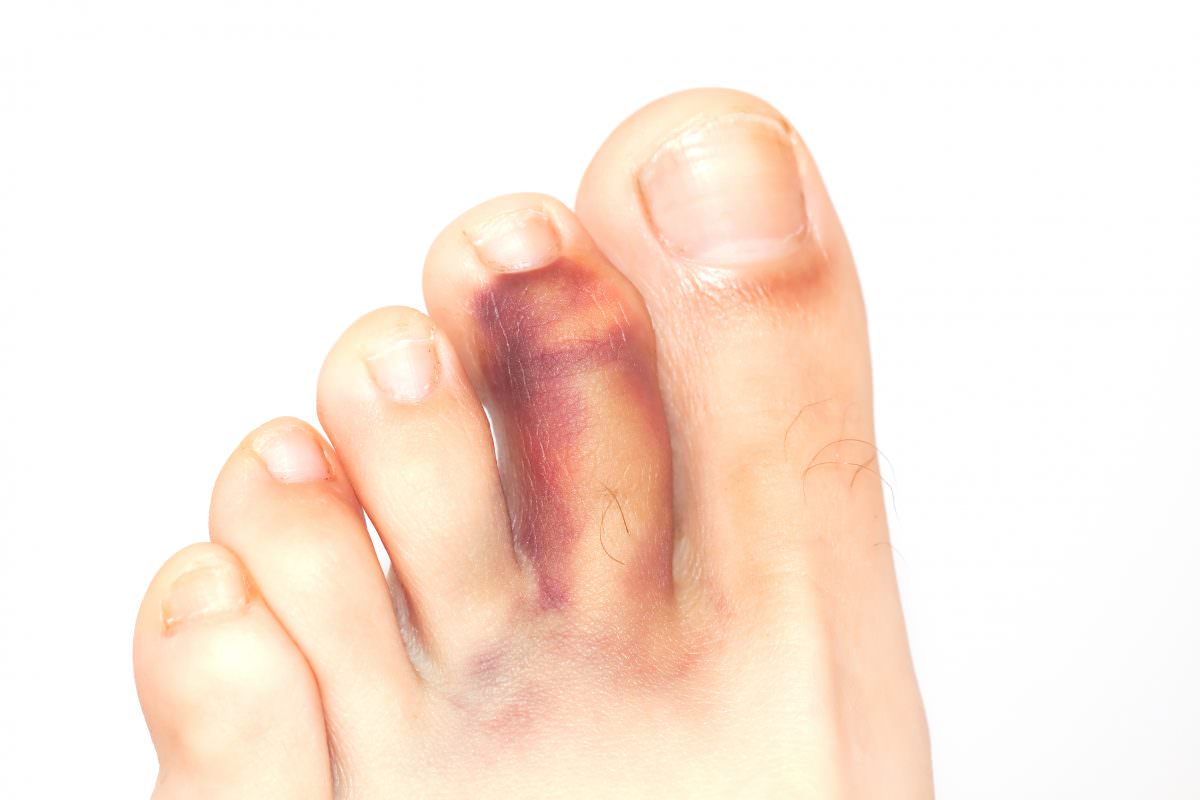
Toe Fracture
The structure of the foot is complex, consisting of bones, muscles, tendons and other soft tissues. Of the 28 bones in the foot, 19 are toe bones (phalanges) and metatarsal bones (the long bones in the mid foot). Toe Fractures and metatarsal bones are common and require evaluation by a specialist.
What Is a Toe Fracture?
A Toe fracture is a break in the bone. Fractures can be divided into two categories: traumatic fractures and stress fractures.
Traumatic fractures (also called acute fractures) are caused by a direct blow or impact, such as seriously stubbing your toe. Traumatic fractures can be displaced or nondisplaced. If the fracture is displaced, the bone is broken in such a way that it has changed in position (malpositioned).
Consequences of Improper Treatment of Toe Fractures
Some people say that “The doctor can’t do anything for a broken bone in the toe.” This is usually not true. In fact, if a fractured toe or metatarsal bone is not treated correctly, serious complications may develop. Here are some example:
- A deformity in the bony architecture, which may limit the ability to move the foot or cause difficulty in fitting shoes.
- Arthritis, which may be caused by a fracture in a joint (the juncture where two bones meet), or may be a result of angular deformities that develop when a displaced fracture is severe or has not been properly corrected.
- Chronic pain and deformity.
- Nonunion, or failure to heal, can lead to subsequent surgery or chronic pain.
Treatment of Toe Fractures
Fractures of the toe bones are almost always traumatic fractures. Treatment for traumatic fractures depends on the break itself and may include these options:
- Rest. Sometimes rest is all that is needed to treat a traumatic fracture of the toe.
- Splinting. The toe may be fitted with a splint to keep it in a fixed position.
- Rigid or stiff-soled shoe. Wearing a stiff-soled shoe protects the toe and helps keep it properly positioned. Use of a postoperative shoe or boot walker is also helpful.
- Buddy taping the fractured toe to another toe is sometimes appropriate, but in other cases, it may be harmful.
- If you are experiencing pain or noticing a change in your feet you should seek medical care right away. Early care can help prevent the condition from worsening. Contact Podiatry Group of Georgia today to schedule your appointment or book you appointment online.
Call Our Marietta, Georgia Office Today at 404-806-3731 or Book your appointment online now!

![podiatryGroup-Logo[1] Logo](https://www.podiatrygroupofgeorgia.com/wp-content/uploads/2020/07/podiatryGroup-Logo1.png)